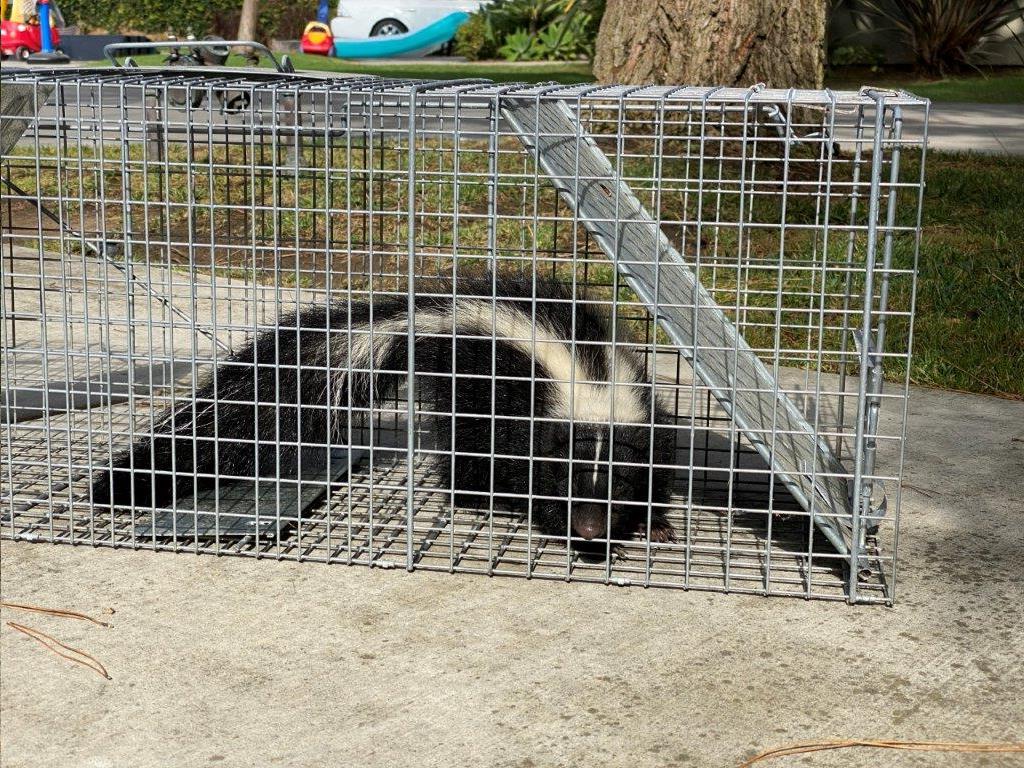
Skunks are furry little creatures. Their thick black fur is patterned by either white stripes, spots, or other types of design. The fur itself makes the animal pleasant to look at. However, aesthetics is not the only reason why these animals grow long thick fur covering their bodies.
Skunks have thick long fur to protect them against the cold during winter. Skunks do not love the cold weather. They spend most of the winter in dens trying to keep warm and their fur helps. They do however shed their fur in order to grow thicker, healthier fur for winter. The fur protects them from snow and rain. The overcoat is thick and long, disallowing snow or rain from seeping into the skin of the skunk. While the thick outer coat sheds, the dense undercoat of the skunk protects its skin from danger.
Why do skunks shed their fur?
Skunks usually shed their fur at the end of summer. The outer furs, or malamute hairs, are completely shed, leaving their inner undercoat. They shed their fur in preparation for winter. Skunks consider winter conditions harsh and they need all the warmth they can get. Shedding off old, worn out hair can give room for healthier, thicker fur, which is essential for protection during winter. They can also shed their fur to give space for the new hairs to grow under.
Skunks have also been known to shed their fur sometimes around spring and the shedding is generally heavier than that of the fall because the skunk's body is trying to shed as much excess fur as possible in preparation for summer where the skunk will need lighter fur. It however lasts for a short period of time. Most of the fur that is shed during spring is the overgrowth from winter. When the weather is warm and the animal no longer needs thick fur, it sheds some of it. If the animal is in an environment where the seasons are somewhat constant, they still shed a little bit of fur but not as much as where the seasons are constantly changing.
The amount of hair being shed is also dependent on how much daylight the skunk gets. It is also regulated by hormones which are secreted by the pineal glands. These hormones regulate how much fur is shed depending on the season.
Although seasons play an important role in fur or coat management in skunks, they are not the only determination of how much fur a skunk will shed. Other things that come into play include how much time the skunk spends above the ground, gender, age, nutrition, and breed. It may also have to do with the health of the skunks. Sick skunks will generally shed more hair than healthy ones.
Skunks that stay underground most of the time tend to shed less fur than those who do not. Thicker fur is needed to keep the skunk warm if it is underground. Once the skunk begins to make frequent trips above ground, the thick fur may no longer be needed as its body sheds off the excess weight. Nutrition also plays an important role in fur shedding. A malnourished skunk will have short, dull fur compared to one that is well fed.
At the beginning of winter, skunks begin to grow back their fur rapidly in anticipation of the harsh season to come. They do this as they simultaneously search for a winter home. As they do not hibernate during winter, they can go in and out of deep sleep often coming out a few times. The thick fur helps to keep them warm and cozy during the winter.
Go back to the Bay County wildlife removal home page.